A UK F-35B Lightning II from 617 Squadron and a U.S. Navy F/A-18E Super Hornet were photographed flying in close formation over HMS Prince of Wales, during trilateral carrier strike operations with Japan.
The event formed part of Operation HIGHMAST, the Royal Navy’s flagship deployment for 2025.
The image captured the two jets flying in tight formation over the Royal Navy’s largest warship, as all three participating nations conducted a multi-carrier exercise focused on airpower integration and maritime strike.
The striking image was captured by the excellent AS1 Amber Mayall and is Crown copyright, for those wondering.
The joint drills underscored the growing strategic and operational alignment between the UK, US, and Japan across the Indo-Pacific.
Operation HIGHMAST is the Royal Navy’s primary Carrier Strike Group deployment this year. Led by HMS Prince of Wales, the eight-month mission will see UK forces operate alongside more than a dozen allied and partner navies. The group will transit through the Mediterranean and Middle East before reaching the western Pacific for a series of high-intensity multinational exercises.
According to a Ministry of Defence update, the next phase of Operation HIGHMAST will focus on integrated air operations in the Indo-Pacific, with British and Japanese forces preparing for combined F-35B activities at sea.
Both nations operate the short take-off and vertical landing (STOVL) variant of the fifth-generation stealth fighter. While the UK has fielded the jet operationally since 2018, Japan is still in the early stages of integrating the platform into its maritime forces.
This week’s operations will see F-35B aircraft and crews from both countries flying from their respective ships and conducting joint air missions at sea, intended to build interoperability and lay the foundation for deeper cooperation.
The joint phase will last a week, after which the UK task group will split. Elements of the force will continue to South Korea, while HMS Prince of Wales and her escorts are expected to proceed to Japan.
Night Ops on HMS Prince of Wales captured in stunning images
UK–Japan air-sea integration has steadily advanced. In 2024, Royal Navy pilot Lieutenant Commander Baker landed a British F-35B on a Japanese Maritime Self-Defense Force vessel for the first time, as part of a test campaign with the U.S. Patuxent River Integrated Test Force.
Japan has recently modified its Izumo-class helicopter destroyers to operate the F-35B, reinforcing flight decks and upgrading internal systems to accommodate vertical landings and support operations.


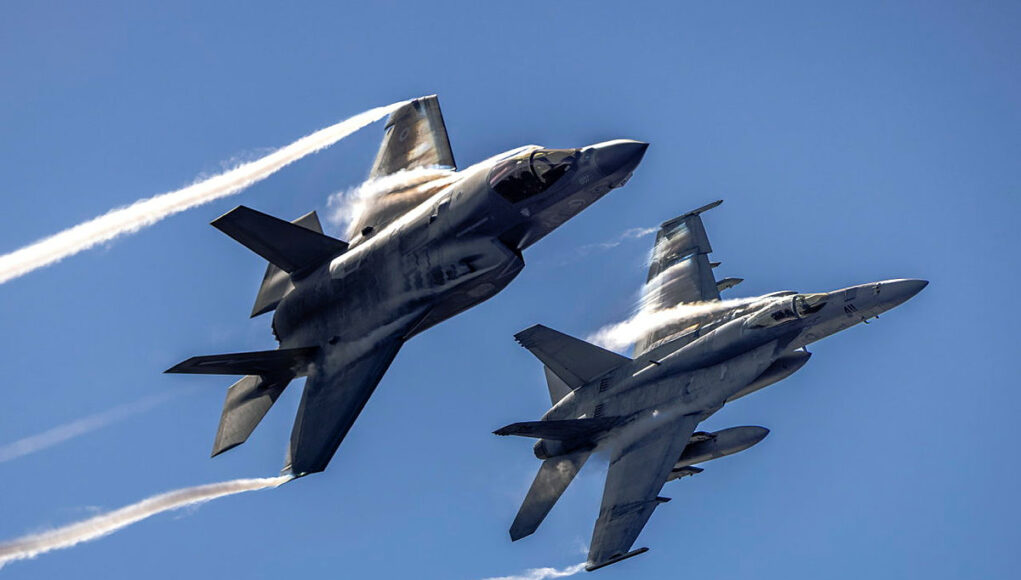

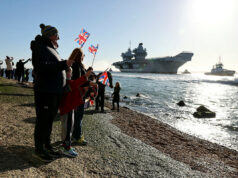
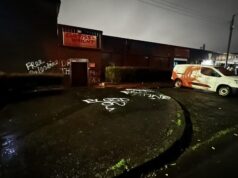
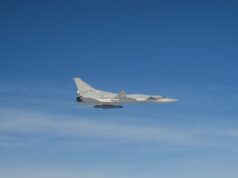
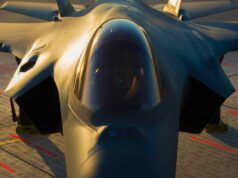
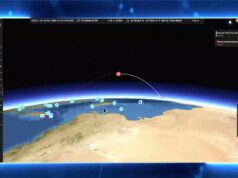
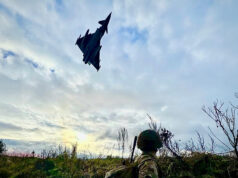
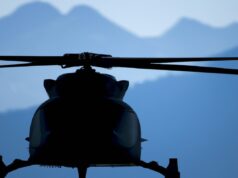
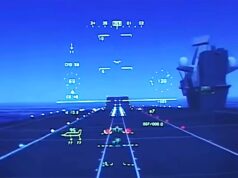

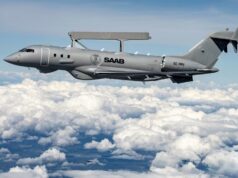

Fantastic picture of two fantastic aircraft. Amber Mayall, you done good girl.
Anyone remember the A5 Vigilanti ? apparently during it’s design and testing period late 50’s early 60’s, it was shown to be stealthy and enhanced to suit.
As with most aircraft, many features of this early research has followed on down through different generations.
(I made it up, no I didn’t, oh yes you did !!!)
Vigilante
Fanks.
I remember the Vigilante. Primarily designed for USN nuclear strike & later adapted for reconnaissance (& yes, I made a model 😉 )
Interesting bomb bay, It sort of “Poo’d” the Nuke from it’s rear end.
“I shit you not”.
yeah and the weapons used to get stuck in the aircraft wake and it would tow it along!!! meaning they could never drop accurately (before LGB) which is why they were changed to Photo Recon.
For random useless information. A clean Hawk T1 also had a low radar cross section. 👍
I like random useless information, it sort of gets you thinking about stuff. This “Vigilante” mention was an attempt to link 1950’s designs with today’s Stealth driven ones. I found it interesting watching one of the designers being interviewed and hearing that this jet had such qualities
.
An article a few weeks ago here was randomly hijacked and Stealth was discussed so I thought I’d !”Slip it in”.
Another random comment – the Avro Vulcan was allegedly hard to pick up on Radar, which if true is quite odd considering it’s size and shape.
The engines were inside the wings.
From a side profile it had quite a small RCS.
It wasn’t so good front on as the front of the engine was visible – you can see that in photos.
Back in the 1960’s having the engines partially visible wasn’t a major issue for radar detection. As there wasn’t any Doppler analysis techniques used for signal processing. This all changed in the late 1970’s early 1980’s when digital signal processing became a thing. The Vulcan could quite easily be modified to have a much lower radar cross section (RCS) that the B1B, which depending on the publication source is anything between 5m2 and 10m2. At 5m2 you’d be looking at a Typhoon with a full underwing weapons load.
The huge delta wing has a number of advantages when minimizing returns to longer wavelength radars that rely on resonance. “If the radar wavelength is roughly twice the size of the target, a half-wave resonance effect can still generate a significant return.” As the wing’s leading and trailing edges are longer than the resonance length of upper UHF, L and S band radars. Plus where the leading and trailing edges meet to almost a point. There isn’t a lot except the tail fin top that could generate this effect.
To give the aircraft a significant reduction in its RCS, it will need a few things modifying:
• The first is to introduce a chine along the sides of the main fuselage towards the nose. This will stop a radar wave from travelling around the aircraft’s circular forward fuselage and reradiating back to the receiver. This would also coincide with reshaping the nose cone, to a more diamond profile.
• Whilst we are at the forward end of the aircraft, the refuelling probe will need removing. But instead of a hidden refuelling probe, hidden behind an opening panel.
• The cockpit glass would need a gold film adding to it. This prevents RF from entering the cockpit through the glass, then being reflected by seats, flat bulkheads etc.
• Next is to put grills and/or screens in the engine air intakes, along with radar absorbent tiles along the intake. This should hide the forward faces of the engines from radar looking at them directly. But with the tiles, they will help to absorb the RF as it bounces around in the intake. The screens should stop it from leaking back out as well.
• The next modification is a bit controversial. Where the single tail fin either gets replaced with an angled V-tail, or is done away with completely. The V-tail is the simpler option, as removing the tail will need the aircraft converting to fly by wire along with generating flight control software.
• All the maintenance, undercarriage and bomb bay doors will require modifying with a saw tooth pattern along the leading and trailing edges, again to combat resonant effects.
• Finally, the aircraft’s skin will need coating with a broadband radar absorbent material.
If you had the money you could really go to town, where the wings leading and trailing edges incorporate RF traps and capture areas. An aerodynamic shield fitted below the engine exhausts, which extends back beyond the exhaust. This will shield the engine from some surface based radars as well help shield the IR signature of the exhaust. Whilst we are at it, change the round exhaust profile to a rectangular one that includes 2D directional control. This would lead on to replacing the Olympus engines with a medium bypass turbofan. Making the aircraft’s noise signature lower, but also generating a smaller IR exhaust signature. Reheat could be used for take-offs and rapid climbing. To significantly lower the RCS side profile, the tail fin needs removing. The aircraft will therefore need converting to fly by wire. To give the aircraft yaw control, the outer ailerons will need converting to an aileron that can also split its upper and lower surfaces, to act a drag rudders. Additionally the new digital flight control computer will need to include blended flight control with engine control, which generates engine differential thrust, helping with the yaw control.
The first 7 bullet points above, would be relatively quick and easy modifications to the aircraft. That will turn the Vulcan into a fairly stealthy bomber at least equal to or more likely better than the B1B. If the money no object route was taken to modify the aircraft, its RCS could be significantly below 1m2. Along with the switch to more efficient turbofans, would make the Vulcan a very potent strategic bomber used as a stand-off cruise missile carrier.
The large delta wing shape does lend itself as a good design for a strategic bomber, but the Vulcan’s airframe really needs significant alterations to make it even better. As the bomb bay although huge by most standards, isn’t actually very deep. Modifying the aircraft to a more blended wing body shape, that then allows for a much deeper bomb bay, is really creating a new aircraft. But if it’s a new design, does it really need to be super stealthy like a B21? Surely the priority is to get within a certain distance of an enemy’s border without being detected, allowing you to bang off your stand-off weapons, is the main goal!
To enhance you useless information. If you replace the canopy glass with glass that is gold lined, you nearly half the aircraft’s radar cross section!
Very true Davey 👍
Not going to claim I remember it, but I love the Vigilante.
One of the biggest jets to operate from a carrier, and it was the first to use the combination of side engines and super thin wings that became normal for supersonic bombers.
I wonder how close they actually were?
It is an amazing image but parallax can make things look very different from reality!!
What a shame our billion of pounds poorly designed and defended, underpowered carrier can’t operate anything but short ranges f35s. No arrested or catapult to truly be able to intergrate with the US and other non voll stol aircraft. Now we have cut our amphibious forces to nothing, they won’t be used as commando carrier. A vital asset taken out getting close enough to put Marines ashore. Ain’t gonna happen.
F35b’s that require a multitude of people to keep it in the air or in India. Refit with electronic magnetic launchers and an Angler Deck. Simples. Extend their life and stick as many drone as you want on them too..
Just to top things off will the UK sell a licence build of the QE carriers to Japan if they’re interested?
Got to feel sorry for these US navy carrier pilots in their F18 biplanes while the FAA is busting around in Lockheed Martin’s latest stealthy garb 😀
For all the talk of difficulties with the F35B is actually being built and deployed in far greater numbers than the F35C. The USN’s pace of rolling out the F35C is glacial and it constantly treats the F35C like a bastard stepchild it never wanted.
Now the F/A XX has been cancelled the USN is going to have to really focus its attention on F35C because the F18 is an old and increasingly obsolete design, it is rapidly becoming the 21st century equivalent of the sword fish.
Nice pic Amber, keep up the good work 👏
Do UK f35s suffer the same cancer the American naval ones do?
The magic paint is rusting and making it reflective to regular radar systems and not just Russian ones.